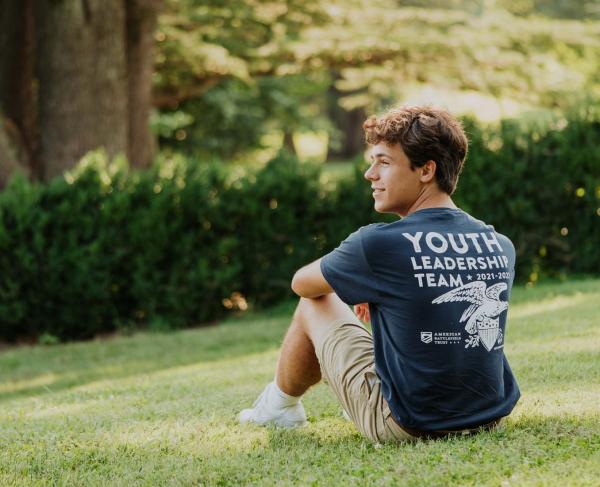"Charge the Enemy and Remember Old Virginia!"
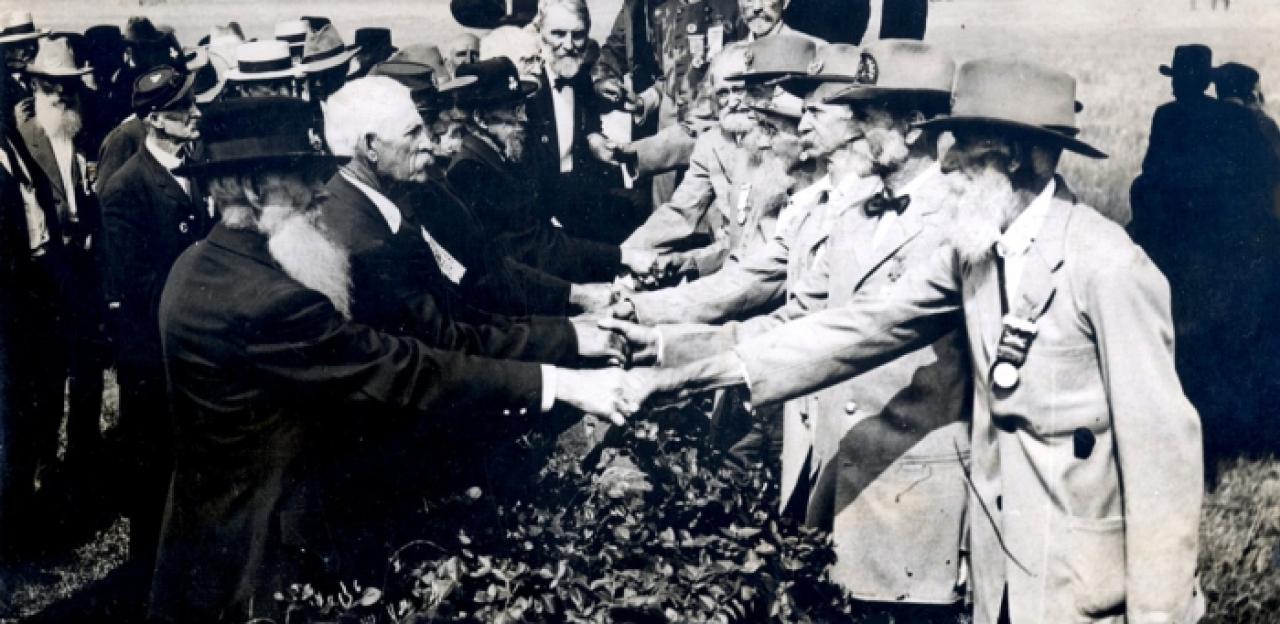
On July 3, 2013, The Civil War Trust's Education Department met at Gettysburg to commemorate Pickett's Charge. Some of the members assumed the role of Confederate soldiers as they marched Seminary Ridge to the Bloody Angle, while others took the point of view of the Union forces at the Angle. Below the Education Department shares their experiences reliving Pickett's Charge.
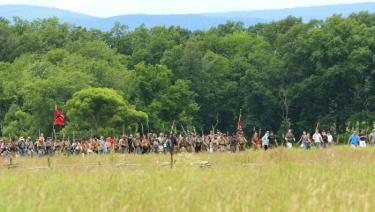
On July 3rd, 2013, on the 150th anniversary of the third and final day of the Battle of Gettysburg, the Civil War Trust’s Education Department ventured to Pennsylvania to commemorate the battle and take part in the Pickett’s Charge Commemorative March. While some of the department had been studying the Battle of Gettysburg for decades and some had yet to see the battlefield in person, attending the sesquicentennial commemoration of the war’s greatest battle was an experience that none of the department could pass up.
Arriving before noon that Wednesday, the department’s six-person team split up in preparation for the charge, Garry Adelman and Matt George stepping into Union shoes to watch the recreation of the charge from the Bloody Angle on Cemetery Ridge. Sam Smith, Roger Bailey, Daniel Landsman, and Kara Kozikowski chose to relive the charge for themselves, walking along Seminary Ridge where nine “brigades,” filled with on average more than 1,500 people each, lined up under signs representing each brigade in the three divisions that took part in the assault 150 years earlier.
The portion of the education department who were now Confederates for the afternoon fell in with Armistead’s Brigade, the brigade that, on July 3rd 1863, truly penetrated the Union line before being pushed back. Rebel re-enactors dressed in full Confederate uniform barked orders to each other as they fell into battle lines next to the hundreds of other participants (whose clothing quickly gave them away as inhabitants of 2013,) as all waited anxiously for the charge to begin.
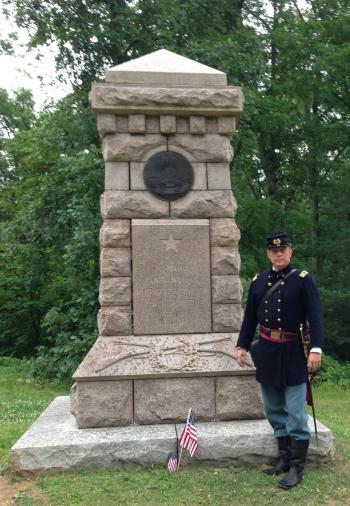
In the July heat, the air was thick with emotion as participants on both sides contemplated the field on which thousands of people stood, a sight that gave onlookers a rare glimpse into how the field must have looked 150 years ago. “There are few opportunities to see such large groups at Gettysburg,” said Roger Bailey, “which gives a sense of what it was like in 1863.” Matt George, who was outfitted in a Union Major’s uniform and watched the charge begin from the Angle, agreed, commenting that “being in uniform and seeing the mass of people somewhat in formation gave me an appreciation for how the charge must have looked to those defending the Angle.”
At 3 p.m., the same time as the charge began 150 years ago (although not adjusted for the lack of Daylight Savings Time back then), Armistead’s brigade went forward, beginning a walk that would end 1,700 yards away, across an open field covered with tall grass, nettles, and poison ivy. For Kara Kozikowski, the beginning of the charge was the best part of the day. “The energy and excitement was palpable,” she said, “and when we all began to move toward Cemetery Ridge, the Rebel Yell took off through our ‘brigade.’ It was very intense.”
The Rebel Yell continued to ripple through that and other brigades as they marched forward, climbing over fences and crossing the Emmitsburg Road, on which all traffic had been stopped to allow for the March. The charging “Confederates” in Armistead’s Brigade moved at a double-quick, led on by a Lewis Armistead living historian who led his troops on with his black hat perched atop his sword. "So much of Civil War study is done purely in the mind's eye," Sam Smith remembered, "or with imperfect illustrations and photographs. Using the battlefield and the visitors as living resources was a fantastic way to tell, experience, and honor a story that is vital to understanding our national soul."
Pausing feet away from the Union line, where hundreds had gathered around the Angle in anticipation, cheers of “For Virginia!” rang out through Armistead's brigade as they charged forward, one more time, and halted in front of the stone wall. Trumpets began playing Taps, and a reverent silence fell across the field.
Participating in the commemoration of Pickett’s Charge was immediately meaningful to the members of the Trust’s Education Department on both sides of the field, and to the thousands of others who gathered on the Pennsylvania field. As Daniel Landsman stated, “Being a part of the charge helped me better understand the charge and really brought the battlefield to life. Nothing compares to the experience of standing on the same field where over 150,000 men fought.”
For Garry Adelman, watching from Cemetery Ridge provided a meaningful experience from a slightly different perspective, “the March was so massive that it could not be captured in one photo: the weather, which turned from rain to puffy clouds around 1pm, hearing the distant Rebel Yells, the artillery, and most of all the reverent silence surrounding Echo Taps as I walked south along Cemetery Ridge.”
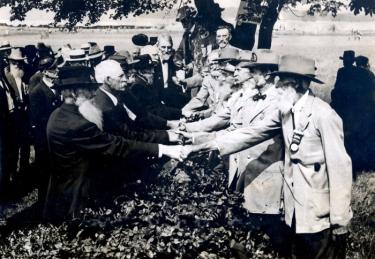
Perhaps the most memorable part of being in Gettysburg on July 3rd was the emotional response. As Matt George stated, “It was meaningful to be there 150 years after it happened to honor those from both sides who lived it and gave their last breath on that field.” The thousands who attended the charge seemed to agree.
“Almost everyone I saw was either happy or at least contemplative,” stated Garry Adelman. “Having thousands of people park far away and then putting them out in the sun and not having scores of people complaining and babies crying is remarkable in itself. This was the mood all week and might be the most striking thing of my whole anniversary experience—engaged, happy visitors who were in many cases moved by something.”
As Roger Bailey commented, “It was interesting to see people’s very different emotional responses to the charge – sorrow, anger, pride, excitement, catharsis. It provided great insight into how Americans remember the war today, and what the fighting meant to them.”
Related Battles
23,049
28,063


